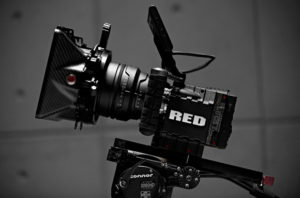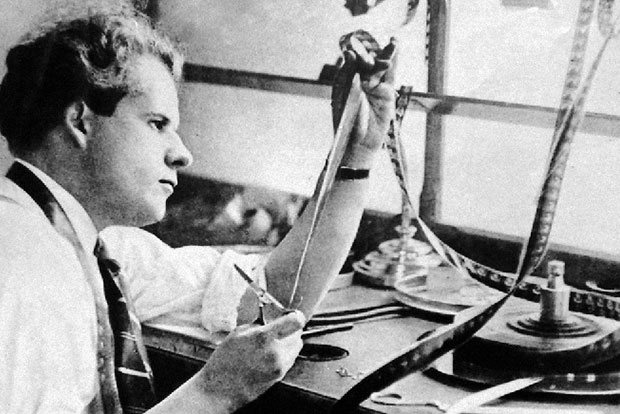
Menu
Cookies Policy | Privacy Policy | Terms & Conditions
Copyright © 1999 – 2018 Rockpointpro. All Rights Reserved.

From whichever perspective you look at editing, there is always something interesting, complex, and enigmatic to talk about.
Different genres require different abilities, but generally there is an endless list of structural, stylistic, and journalistic rules that a long-form editor applies to a set of raw footage in order to craft a story that is watchable by millions of people.
We make thousands of progressive adjustments throughout the course of a project ranging from the very large to the very small and every single one of them is extremely important. Every single one of them has the power to alter the mind of the audience. There are no random actions in editing; every single frame is there for a reason. Like great writing or musical composition, displace one note, one phrase, a space between the elements and the structure falls; the emotional impact for the audience is gone.
THE HUMAN FACTOR
I love the fact that every documentary project I work on throws up a very specific and individual set of problems for me to solve. It means that for over fifteen years, no two days have been the same in the edit suite. But one of the most enjoyable aspects for me is the human factor. A particularly fascinating part of the craft is that every single character has individual nuances that you may have never seen before and may never see again.
Yes, we have a ton of creative tasks we need to achieve as part of our day to day work; like perfecting the narrative arc across the entire film and the refinement of the pace and timing so that our audience are engaged on that roller coaster ride throughout our film. But how we show specific human traits and the order in which we show them has always been one of my favourite parts of the craft.
It’s an interesting thought that many times one of the first things one editor will say to another, if they happen to meet by the water cooler in an edit facility while on their break, is what their characters are like. Of course they’ll describe the quality of the narrative that the director has managed to capture, whether the camera operator has shot it well and so on.
But how compelling the humans are in the story, is always high up on the list. Stories are told through human experience and that is what we are all here to do.
“We make thousands of progressive adjustments throughout the course of a project, ranging from the very large to the very small, and every single one of them is extremely important.”
I love watching people and then analysing their characteristics. I am constantly fascinated by this study of the human condition. A large part of our job is scrutinising every one of our characters, studying their reactions, their body language, their intonation, their emotions and showing these individual nuances to the audience in a very specific order that serves the purpose of the scene.
There is a huge layer of communication buried deep behind the obvious content of what our characters say. Their actual words are only half the story and this is the captivating and psychological aspect of narrative editing.
THE DISTANT OBSERVATORY
The edit suite is an observatory and in it we watch and study mankind from a distance. Free from the chaos of the shoot and oblivious to the relationships that needed to be created in order to make possible what we see before us in our edit bins.
We are the portals through which the world watches these characters. We are the final stage in a complicated and collaborative chain of talented, creative people. The hundreds of hours of hard work put in by the production team must be filtered through us and out into the world in a way that shows the audience only the best possible construction of what was shot.
We mine through what the character has said and done on camera and take those words, that action, that body language, those physical nuances and we re-craft them into a structure that has the most impact for the audience and reflects the true meaning of what the scene is about.
We have our own private, dimly lit laboratories where we can examine, deconstruct and reconstruct the wide range of human emotion from a tranquil and impartial distance. This psychological aspect to editing and the numerous creative decisions it produces is certainly the part of the craft that engages our intellectual side but what determines these decisions and how do we make them? What makes us editing artists attuned to the minutiae of human interaction with the camera?
Firstly: the rules. Like any art form there are rules. There is a set of visual and structural grammar that must be adhered to in order to make what we’ve created digestible to a large audience. We can’t show a set of random nuances that our character displays to camera without observing the rules of a scene, this is one of the principle reasons I created Inside The Edit, no one was teaching the hundreds of concepts an editor needs to know to get to a professional level.
But this is only the first stage, what we think is important to show to the audience is the beginnings of our own artistic style. It’s a cliché in editing that if you give ten editors the same footage you’ll get ten different films. What each one thinks is important to show to the audience changes from person to person. After an editing artist has learnt the rules they can then create that personal signature. As Pablo Picasso famously said “Learn the rules like a pro and then break them like an artist.”
WHO WE ARE AS ARTISTS
But what also drives our decisions is who we are as individuals. We bring our personalities to the cutting room, we bring our life experience, and we, just like the audience bring emotional baggage to any scene. We might subconsciously match the pacing at the end of scene eighteen with a film we watched when we were a teenager. Or the tone of scene twelve might be a subconscious reflection of an argument we had with a friend last summer.
The films we watch, the magazines we read, the photographs we like, the literature we devour, the music we listen to, these all have a subliminal influence on what we think is important when crafting any scene. This is one of the primary things that make us unique. What gives us our style, what makes us stand out. Our idiosyncratic, creative signature.
And so we actually learn about ourselves when we edit. What we like, how we see the world, our interpretation of events, of pacing, what we think is important and these in turn feed back into our editing decisions.
PASSING OBSERVATIONS ONTO THE AUDIENCE
I have spent somewhere between 40,000–50,000 hours in the editing suite silently constructing narratives, human stories, new pieces of art.
Shaping them, perfecting them, making them better with every pass through before I hand it over, leave that dark room and walk straight into a new one.
“The films we watch, the magazines we read, the photographs we like, the literature we devour, the music we listen to, these all have a subliminal influence on what we think is important when crafting any scene.”
I always get a thrill when I’m confronted by a new story, a new structure, new problems to solve, new possibilities and always intriguing to me, new characters. Whether it’s an emotional observational study of someone under stress or a highly logical scientist. I’m here to help them get their story across in the most interesting, eloquent and dramatic way possible.
Analysing the tiniest differences in the tone of someone’s voice from one sentence to the next. Re-adjusting the short dramatic space between a character describing an event and then telling us how they feel about it.
Making sure that a certain strained and discomforting look off camera is in the right place. These are all a study of the human condition and they help us illustrate the story.
Passing these fascinating observations on to my audience is, for me, one of the most satisfying parts of the beautiful art of editing.
Article by Paddy Bird (‘Inside The Edit’ 2015)
Other articles you might like …
Cookies Policy | Privacy Policy | Terms & Conditions
Copyright © 1999 – 2018 Rockpointpro. All Rights Reserved.